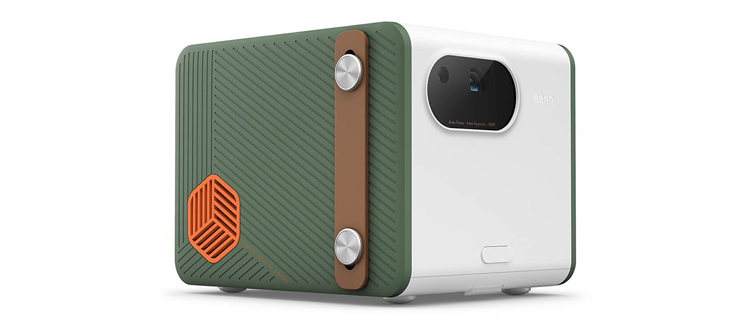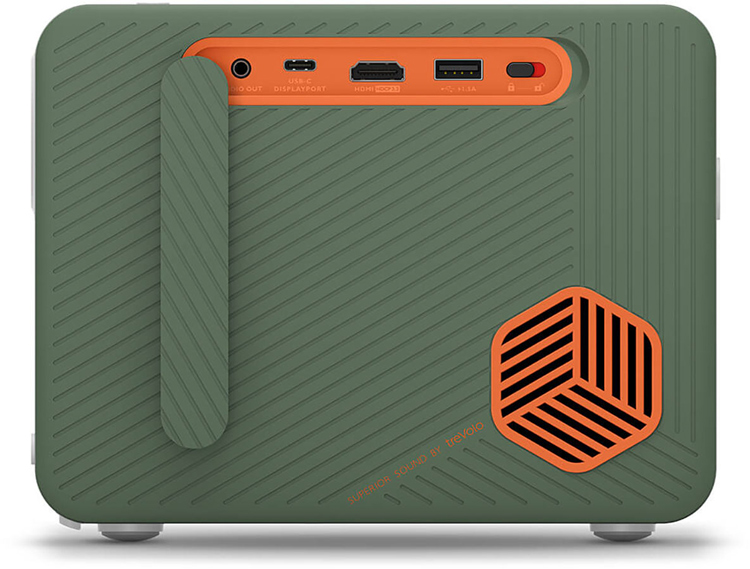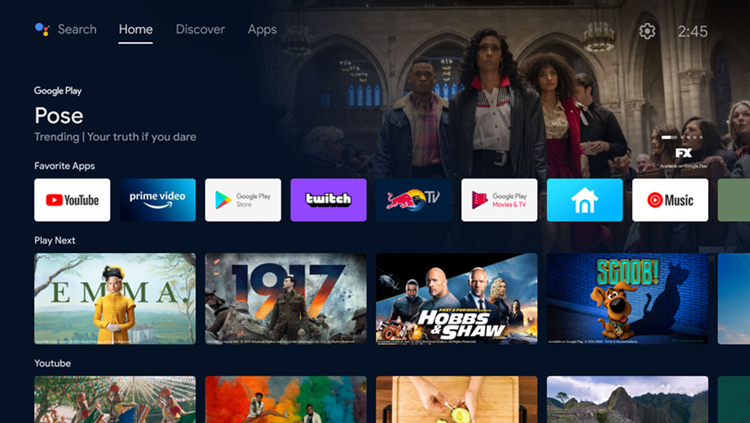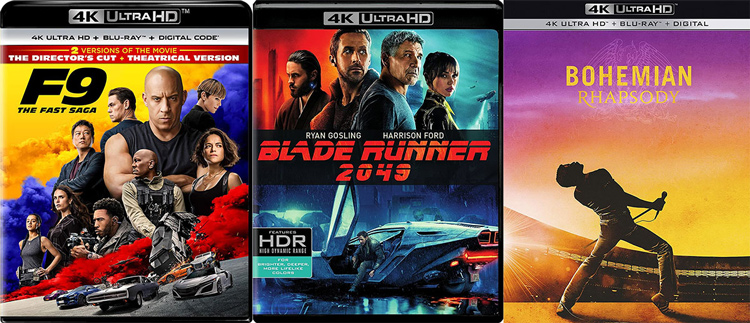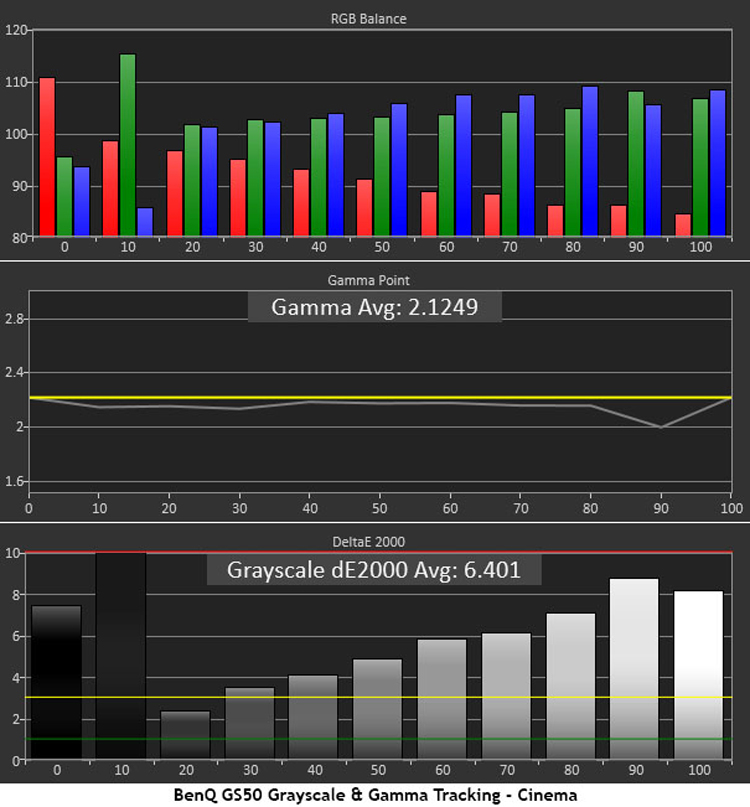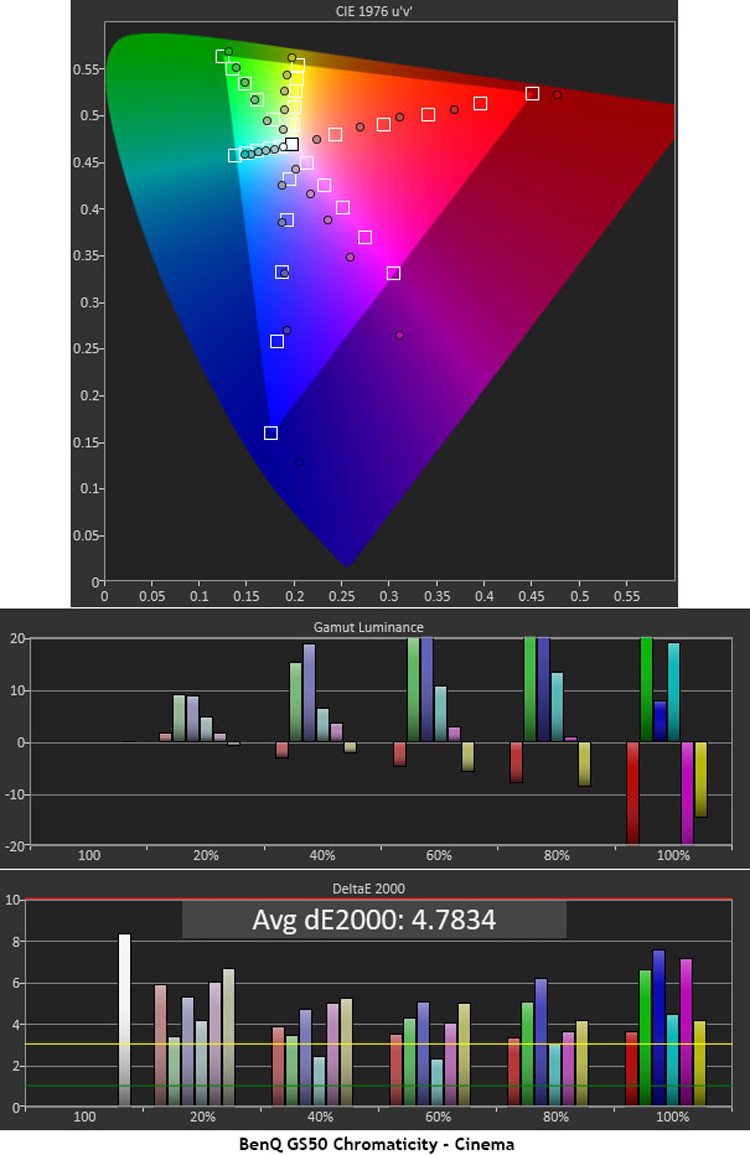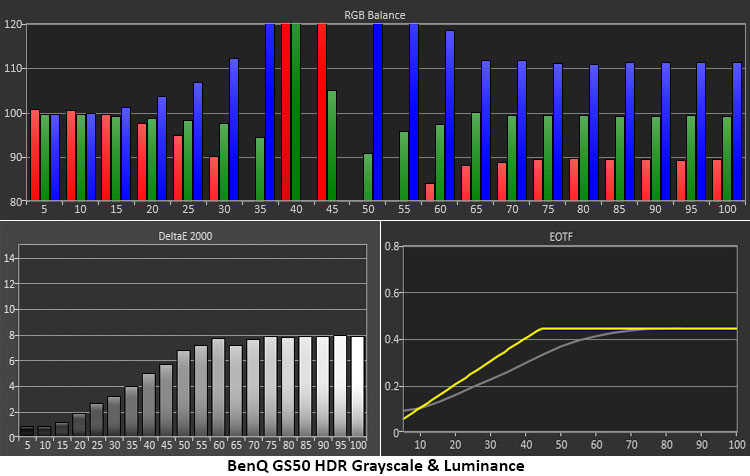The BenQ GS50 Portable Outdoor Projector is more than just a portable display. It’s resistant to the weather and has an internal battery which means you can take it outdoors for movies by the pool, or around the campfire. It’s a 1080p display with a DLP light engine that accepts Ultra HD signals with HDR10 or HLG metadata. With convenience features like auto-focus and impressive built-in audio, it delivers a lot of performance in a tiny box, and even comes with a nice carry bag.
BenQ GS50 Portable Outdoor Projector
- Portable 1080p DLP projector with HDR10 and HLG
- Weather-resistant with IPX2 splash-proof rating
- Impact-absorbing outer shell
- Impressive sound from built-in 2.1 speaker system
- Auto-focus for easy setup
- Includes carry bag
Portable projectors are nothing new. For many years, small boardroom displays have been used by people seeking a quick and easy entertainment solution while traveling. BenQ has taken this concept to the next logical level by creating purpose-built displays for consumers with accurate color and solid image quality packed into a tiny chassis. Their latest generation of products includes the GV30 and today’s subject, the GS50. It’s a 1080p DLP with an LED light engine rated for 20,000-30,000 hours of maintenance-free use. It accepts Ultra HD signals with HDR10 or HLG through its HDMI 2.0 port or streamed via the included QS01 Android TV stick which fits into a special hidden compartment. It can also run for up to two-and-a-half hours on an internal battery. With a simple setup thanks to auto-focus, keystone correction, and corner fit, you can watch an image up to 113 inches diagonal with no wires or external video sources. Let’s take a look.
Type:
Single-chip DLP 0.23”
Native resolution:
1920×1080, 16:9 (accepts up to 3840×2160 w/HDR10 or HLG)
Light source:
LED
Service life:
20,000 hours (30,000 hours in Eco mode)
Light output (mfr):
500 ANSI lumens
Throw ratio:
1.21:1
Image size:
30-112 inches
Video connections:
2x HDMI 2.0b (1 w/ARC 2-channel)
Audio connections:
3.5mm analog output
Speakers:
2x 5 watts, 1x 10 watts
Dimensions:
7.3” x 6.1” x 5.8” (WxHxD)
Weight:
5.1lbs
Warranty:
3 years
BenQ GS50 Portable Outdoor Projector Price:
$799
Website:
Company:
SECRETS Tags:
benq, gs50, dlp projector, led projector, portable projector, outdoor projector
The GS50 uses a 0.23-inch DLP pico chip running at 1920×1080 pixels. It will accept signals up to 3840×2160 with HDR10 or Hybrid Log-Gamma. The light source is an LED rated for 500 lumens and 20,000 hours, 30,000 in the lamp’s Eco mode. Suffice it to say that you’ll get 10 years out of this projector if you watch it every single day for five hours.
The GS50 is a small box that’s not quite a perfect cube. It has rounded corners and a rubberized finish that makes it easy to handle and provides some protection against dropping. I didn’t test this particular feature, but it is far more rugged than any other portable projector I’ve encountered. The outer shell also covers a water-resistant film which earns the GS50 an IPX2 splash-proof rating. You can get it wet, but it will not tolerate being submerged.
At the front is a small lens with a medium-throw ratio of 1.21:1. It filled my 92-inch screen from around eight feet away. Focusing is automatic once you press the dedicated remote button. It takes only a few seconds and is very effective. You can also adjust geometry with keystone correction and a corner fit feature where you can warp individual corners of the image. Take care with these as they will reduce the resolution. You can also tilt the GS50 upward with a spring-loaded foot at the front.
The GS50’s most impressive feature is its internal speakers. They’re set in a 2.1 configuration with two mid/tweeters and a larger woofer that delivers a lot more bass than the chassis’ small size would suggest. It’s easily the best sound I’ve ever heard from any projector and it’s rivaled only by the GV30 which I reviewed recently. BenQ has truly raised the bar for internal speakers. The soundstage is convincingly wide and when sitting behind the projector, the sound seems to come from the screen. That’s an amazing achievement.
The remote is a small handset with all the necessary functions included and is the same unit that controls the GV30 and the V7050i UST model I reviewed recently. It is not backlit. At the top are power toggle, focus, and keystone buttons. Next are direct-access keys for Amazon and input selection. After the nav pad, you get a home key which opens the Android interface. A microphone button activates voice control via Google Assistant. Last is the volume rocker switch.
Like the GV30, the GS50 has a hidden compartment for a streaming stick which is included in the box. The QS01 is an Android TV 9.9 device with HDMI 2.0. That means it can stream Ultra HD content with HDR if you have a sufficiently quick internet connection. It has the latest 802.11ac Wi-Fi with dual-band (2.4/5GHz) capability. It also allows the GS50 to function as a Bluetooth speaker. And you can cast or mirror your phone or tablet screen directly to the projector. It’s compatible with Apple AirPlay and Google Chromecast.
The inputs are hidden under a small flap and include one HDMI 2.0, a USB-C which mimics DisplayPort functions and provides up to 45 watts of power, one USB-A, and a 3.5mm audio output. The power jack is in the back under a small cover and works with the included power supply. It will power the GS50 and charge the internal battery.
My first order of business was to install the QS01 streaming stick. It fits into a dedicated compartment which is completely hidden once you replace the snap-on cover. Booting up the GS50 takes you straight to the Android TV 9.0 interface which I had already configured during my review of the GV30. The remote control navigates both the projector menu and the Android screen with equal convenience.
The OSD is like the GV30’s but with a couple of additions. There are a few more picture modes, seven in total plus HDR10 and HLG. And you can change the color temperature with three presets. The LED can be set to Normal (brightest) Low or Eco which varies the light level according to content. For my tests and watching, I stuck with the defaults, Cinema mode, and Normal LED power. There are audio modes too which change the shape of the soundstage for different kinds of content. I used the Cinema mode there as well.
With the Android stick installed, I connected a Panasonic DP-UB9000 Ultra HD Blu-ray player to the HDMI 2.0 port, logged into Amazon Prime Video, and sat back for some viewing.
The GS50’s HDR capability is a real asset with streamed content. Many of the newest Amazon shows and movies are available in HDR10. I tried a couple of familiar shows, Making The Cut and The Grand Tour: Lochdown. Both shined with crisp detail and bright highlights. The color was very good though I missed a little warmth in the flesh tones. Blue and green textures like sky and forests were lush and vibrant. Contrast popped with good blacks. Some fine shadow detail was hard to see but it didn’t detract from the experience. Motion processing was also solid with high resolution and no visible breakup during quick camera movements.
I also checked out a few YouTube videos. This content varies widely depending on how well it’s produced but when it comes from the more prominent feeds like Hoovie’s Garage or Global Cycling Network, it looks very good. Some clips are shot in 4K, but I couldn’t tell a difference between them and 1080p streams. No matter because both were sharp and clear.
The GS50 accepts 4K signals with HDR so I spun a few UHD Blu-rays starting with the newest Fast and Furious chapter, F9: The Fast Saga. I directly compared the HDR and SDR versions of the film and noted a few subtle differences. The HDR version had better contrast for sure, especially in highlight areas. The color palette was slightly cooler which made character faces a little less vivid though textures were clear. I also noticed a few instances of crushed shadow details. Michelle Rodriguez’s hair was a good example. In darker scenes, the individual strands were hard to make out.
In the SDR version of F9, the picture didn’t pop quite as much but I liked the warmer color palette. Reds were a little stronger and the shadow detail I missed from the HDR disc was visible here. But blacks were not as deep, showing more gray than black. I can’t pick one over the other since sharpness was equal. HDR was brighter while SDR had a more balanced color.
I had no trouble finding shadow detail in the HDR version of Blade Runner 2049. In the opening scene, Dave Bautista walks through a screen door. Many displays can’t resolve the screen because it’s so fine, but I saw it on the GS50. It wasn’t always visible, but it appeared for a few seconds which is impressive because the camera is in motion. This is one of the strengths of DLP. Motion resolution stays clearer when there’s no motion blur.
I finished my viewing with Bohemian Rhapsody. The Live Aid performance late in the film starts with an aerial pan down into Wembley Stadium. The details in the capacity crowd were clear. I could see different colored skin tones, waving arms, fingers, even jewelry. I suspect it’s mostly CGI but the GS50 had no trouble resolving all of it.
During all my viewing sessions, I marveled at the sound quality. The GS50 plays loud, louder than the GV30. I only need about 40% volume to fill my 12 by 14-foot theater space with its vaulted 11-foot ceiling. The sound emanated from the screen as long as I sat behind the projector. The stage was wide with a three-dimensional quality. Dialog was crystal clear and there was a lot of bass; far more than one would expect from such a small box. BenQ has really achieved something extraordinary here.
It’s hard to set a firm number on projector battery life. The GS50 is rated for 2.5 hours, the same as the GV30 I recently reviewed. I watched for about an hour using the streaming engine with the volume set to 50% and the battery indicator dropped to 64%. The LED was on low power which is the default when running cordless. You can set it to Normal if you wish but that will decrease runtime. It appears that if you stick with low LED and don’t turn the volume up too high, the 2.5 hours rating can be achieved.
The GS50 doesn’t have traditional calibration controls like RGB sliders or gamma presets. But you can select different color temps and the picture modes have different gamma response. I used the Cinema mode as my starting point with the default Normal color temp.
As you can see, Normal still means cool though it isn’t too far off the mark. Since green and blue are well-balanced, the error isn’t too obvious. Gamma tracks close to the 2.2 line with a small dip at 90% which means that the luminance level is a tad light. In practice though, the image has good depth and whites that appear neutral.
The cool white point pulls the red primary off its saturation targets. The 20% through 80% points are all about 10% under. Though blue is over-saturated, it is a little off in hue which pulls the cyan saturation inward. Magenta is also a little too blue. These are relatively small errors as the average is 4.78dE, just over the visible threshold.
I couldn’t calibrate the GS50, but I tried the other picture modes and color temps to see what effect they had. The Warm color temp preset makes the white point greener rather than adding red as I had hoped. The Cool option is clearly too blue. The other picture modes all have light gamma with averages below 2.0. They make the image look too hazy and flat. Cinema with the Normal color temp is the best choice for SDR content.
Though the GS50 is a 1080p display, it accepts signals up to 3840×2160 with HDR10 or HLG metadata. This format automatically triggers the projector’s HDR mode. You can still change the color temp though and like the SDR modes, Normal is the best option.
The GS50 is reasonably neutral in the darker steps, then it becomes warm around the tone-map transition point at 45%. Brighter steps have a slight blue tint which makes the picture look a bit brighter. The net effect is positive with more contrast in HDR mode and more pop. Luminance tracking takes a very smooth approach to the transition point, then hits the knee at 65%. This makes dark and mid-tone areas look a little darker which helps improve perceived contrast. The downside is a slight reduction in detail. But HDR content clearly looks better than SDR when the same material is compared.
The GS50 is a Rec.709 display so I used that reference when measuring HDR color gamut response. The projector hits all the red targets while over-saturating the other colors. The secondaries are a bit off-hue as well. Real-world content looks a bit cool in general though most shades are natural. Overall impressions are a slight lack of warmth but there is still good dimensionality.
For the output tests, I used my usual configuration with a Stewart Filmscreen Luminesse covered with Studiotek 130 material, gain 1.3. The meter was set 10 feet back from the center of the screen.
In Cinema (SDR) mode with the LED on its highest setting, Normal, peak white was 51.1708 nits with .2019 nit black and a contrast ratio of 253.5:1.
HDR mode has a peak white level of 71.112 and a black level of .2021 nit. That makes the HDR contrast ratio higher at 351.9:1.
The Bright mode delivers over 76 nits peak but is very green in tone. It would work well in an outdoor situation where floodlights are competing with the image. In dark environments, Cinema is the best choice for color and contrast.
For $799, BENQ’S GS50 PORTABLE OUTDOOR PROJECTOR goes way beyond the capabilities of other portables with terrific sound, a stout battery, and great image quality.
- Best in class audio quality
- Solid picture quality with good color and HDR support
- Rugged construction with water resistance
- Easy setup
- Compact chassis and nice carry bag included
- More calibration options
The BenQ GS50 Portable Outdoor Projector raises the standard for compact displays. With a solid image, HDR support and a long-life LED light source, it will deliver quality entertainment for years to come. Its audio is the most impressive part with a sound that literally fills the room and is well balanced with impactful bass. I loved how well it worked just running on the internal battery. You can literally set it up next to your RV or SUV and watch movies over a campfire. My only wish was for some additional calibration options. I realize BenQ is going for simplicity and convenience, and that is certainly achieved. But a set of RGB sliders and a few gamma presets would make a very good image into an excellent one. I certainly enjoyed my time with the GS50 though. At $799, this compact projector is hard to beat.




